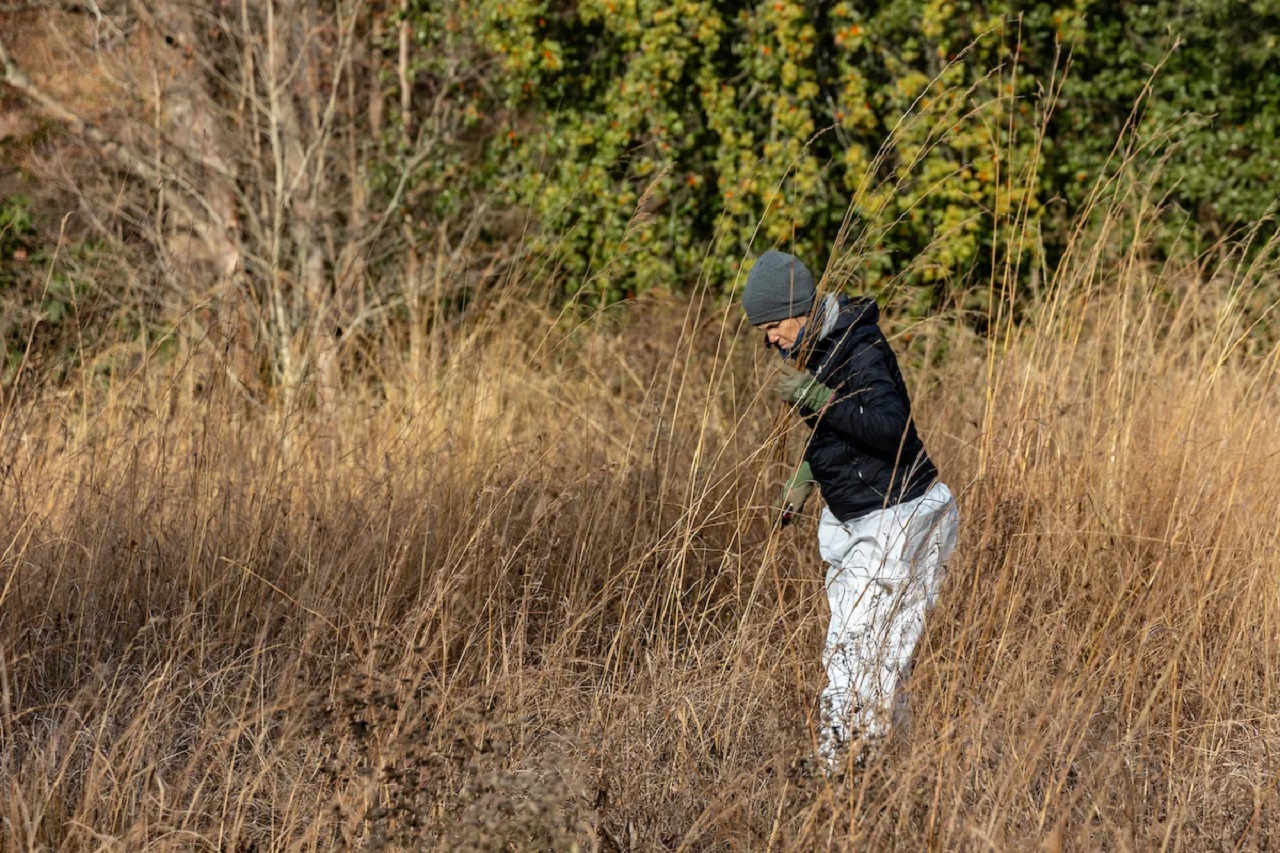
Mt. Cuba Center horticulturalist Josie Marsh collects yellow Indian grass from the center’s meadow that can be given to the Tri-State Bird Rescue and Research to use to build habitat. (Kimberly Paynter/WHYY)

Mt. Cuba Center horticulturalist Josie Marsh collects yellow Indian grass from the center’s meadow that can be given to the Tri-State Bird Rescue and Research to use to build habitat. (Kimberly Paynter/WHYY)

Mt. Cuba Center horticulturalist Josie Marsh collects yellow Indian grass from the center’s meadow that can be given to the Tri-State Bird Rescue and Research to use to build habitat. (Kimberly Paynter/WHYY)
A team of horticulturalists at Mt. Cuba Center waded through a meadow of tall native grasses on a mid-November morning. As they trekked through the expanse and gathered piles of yellow plants, Velcro-like seeds from other meadow plants adorned their clothes.
“What we’re doing today is managing yellow Indiangrass,” said Joshua Dunham, a senior horticulturist at the botanical garden in Hockessin, Delaware.
Along the way, the gardeners bent down to cut the seed-filled stems to control these rapidly growing grasses. Some of the plant waste will be composted. But other piles, along with their seeds, will be sent to Tri-State Bird Rescue & Research, about 10 miles away in Newark, Delaware.
The bird rescue uses the donated plant waste to create natural habitats for native birds recovering from oil spills, flying into windows, cat attacks, fishing line entanglements, and lead poisoning. The organizations say the partnership underscores the importance of native wildlife.
“We are holding the value of these native plants,” Dunham said. “This is food. This is habitat for these birds. And why can’t we give [the plants] a second purpose?”
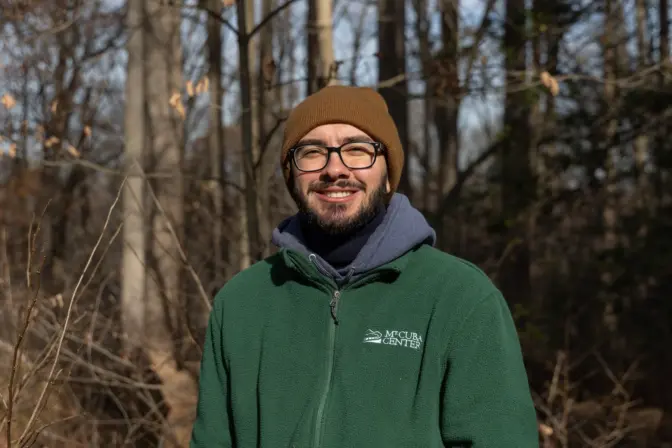
Josh Dunham, a senior horticulturist at the Mt. Cuba Center botanical garden in Hockessin, Del., is part of the meadow cleanup that delivers plant material and seed to Tri-State Bird Rescue and Research in Newark, Del. (Kimberly Paynter/WHYY)
Bird rescue volunteer Marian Quinn came up with the idea in 2018 when Mt. Cuba posted on Facebook that it needed to destroy the egg casings of Chinese praying mantises, which are invasive and prey on native insects. Quinn asked the garden to donate them to the bird rescue instead.
“I wrote to them and said, ‘No, don’t burn them. Give them to Tri-State because we can hatch them. There’s food in there,’” she said.
Mt. Cuba soon started donating dead and ailing plants, from branches to grasses, as well as seeds. The bird rescue uses the plant materials to design temporary homes for the birds while they recover. Quinn drives to Mt. Cuba throughout the year to fill her Mazda with piles of plants.
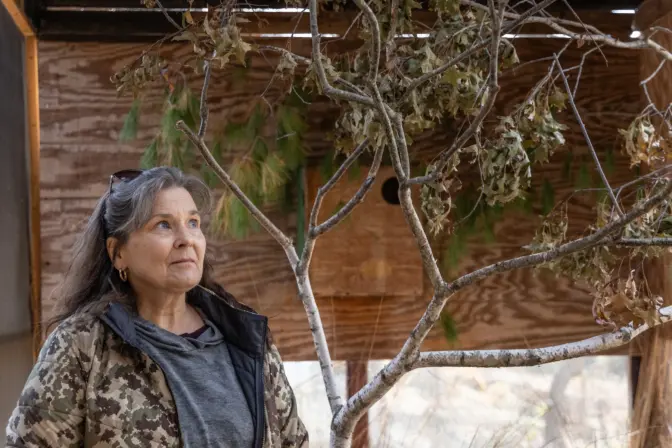
Marian Quinn is a volunteer at Tri-State Bird Rescue and Research where she uses donated garden items to create realistic habitat for Tri-State’s recovering patients. (Kimberly Paynter/WHYY)
Dunham said the partnership has made his job that much more worthwhile.
“It makes me want to get up and come to work and just to help support another organization that’s doing work for another living organism,” he said.
The donations save the bird rescuers time and energy, because they don’t have to hunt for native plants themselves. In the summer months, there might be 250 birds to find plants for.
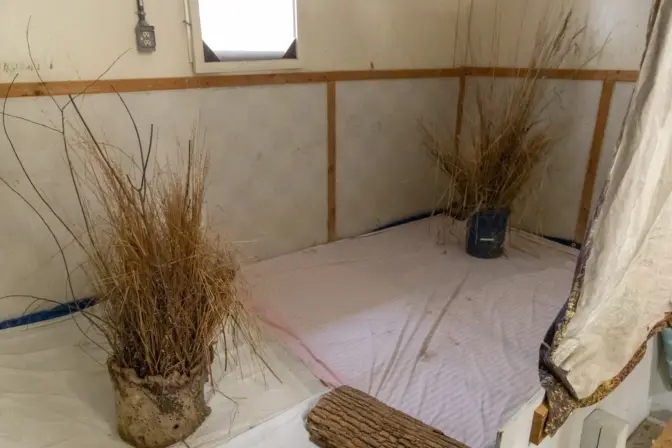
Volunteers at Tri-State Bird Rescue and Research use donated garden items, like yellow Indian grass from the Mt. Cuba Center, to create realistic habitat for Tri-State’s recovering patients. (Kimberly Paynter/WHYY)
The enclosures mimic the birds’ natural habitats, which helps reduce stress and the amount of time clinicians need to handle them, said Tri-State clinic director Andrea Howey-Newcomb.
“Most of these animals are prey species to some animals out in the wild,” Howey-Newcomb said. “So, having an environment that they can feel comfortable in will make them feel safe. Once they feel safe, they will start self-feeding [which will] decrease their time in captivity.”
Inside one of the outdoor enclosures, Quinn and a colleague have arranged yellow Indiangrass from Mt. Cuba along a wooden floor and assembled branches to replicate trees for a bird to perch on. She said these habitats can take several hours to design and create.
“It’s an art and a science,” Quinn said. “You have to understand your species and their behaviors.”
For example, birds have varying foot structures, requiring different types and sizes of branches to perch on.
The types of plants they eat, sleep on, and hide in also vary. A shorebird’s enclosure may include sand and dune grass, while a woodland bird’s enclosure may include branches and leaves.
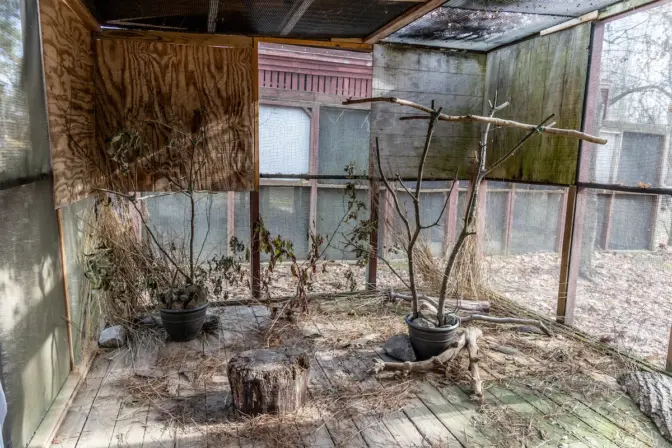
Volunteers at Tri-State Bird Rescue and Research use donated garden items to create realistic habitats for Tri-State’s recovering patients. (Kimberly Paynter/WHYY)
“It’s exactly what they would need out in the wild, and it’s what they’re getting here in rehabilitation — whether it’s a tundra swan or a swamp sparrow,” Quinn said.
The habitats encourage the birds to be mobile and engaged, which aids in their recovery. The plants themselves also provide a food source for the birds.
Quinn lights up when recalling a time her supervisor caught a glimpse of an injured swamp sparrow eating the donated pea pods she installed in its enclosure. The sparrow, which suffered injuries from crashing into a window, made a full recovery.
“She could hear this little injured sparrow in the tote, happily munching away, opening up these little pods and pulling the seeds out,” Quinn said. “It brought tears to my eyes that it’s as though he never left the wild.”
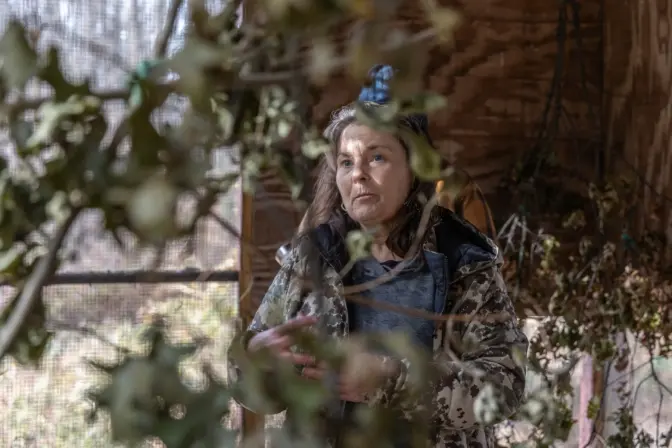
Marian Quinn finds the work being done at Tri-State Bird Rescue and Research rewarding. (Kimberly Paynter/WHYY)
Quinn said it’s emotionally draining to witness the kinds of injuries the birds in her care sustain. However, she said it’s rewarding when the birds use the habitats to recover.
“I bring in a bird that … may be bleeding or … dangling from a fishing line. Or, they have trash tangled on them,” she said. “To get to a point where this bird is in an enclosure with habitat materials that reflect their natural environment … and they’re eating, and they’re drinking water, and nobody’s bothering them. They’re just being that bird. It’s a beautiful thing.”

Get insights into WITF’s newsroom and an invitation to join in the pursuit of trustworthy journalism.
The days of journalism’s one-way street of simply producing stories for the public have long been over. Now, it’s time to find better ways to interact with you and ensure we meet your high standards of what a credible media organization should be.